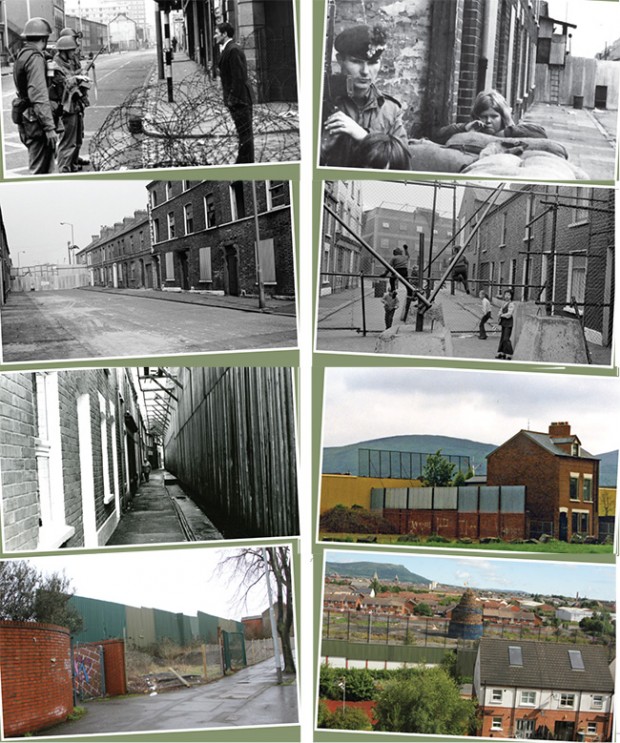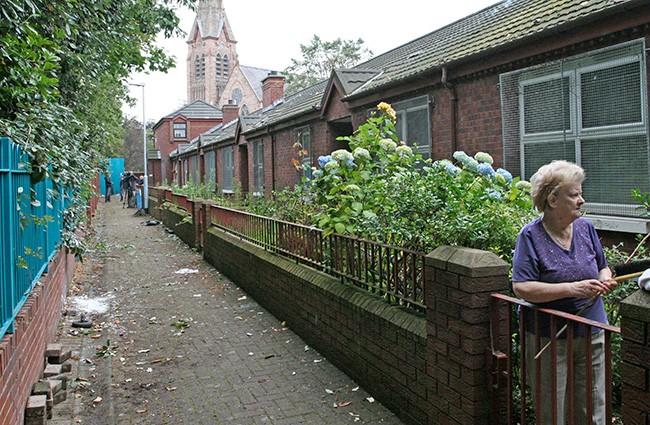5 December 2019 Edition
A Belfast without ‘peace’ walls is possible
Determination is key to the breakdown of barriers

Interfaces, or so called ‘Peace Lines’, were first erected in the North of Ireland by the British Army in 1969, following a spike in attacks by loyalists against nationalist communities in Belfast.
Divisions were born out of a lack of equality and rights for Catholics and Nationalists. The physical barriers were designed to be a temporary solution, but fifty years on – they remain.
As the conflict became more volatile and intense, the building of walls and barriers became a lot more common and complex across the north.
One of the most notorious interfaces in Belfast during the conflict was between the Republican Falls Road and the Loyalist Shankill Road. The British Army were deployed to the area in mid-August due to increased conflict. This led to the erection of makeshift barricades by residents across the city.
Following calls for removal of the barricades by some public representatives, discussions led to replacement ad hoc barriers, known as knife rests, being put in place.
In the intervening period the Unionist government were aware of a forthcoming report which would be highly critical of them and the RUC.
The Cameron Report was to be published in mid-September, and on September 9th a decision was made to install more formal structures along the dividing line between the Falls and Shankill Road areas, in an attempt to minimise any violence.
Following this decision, Unionist Prime Minister James Chichester Clarke said in a press conference: “The army will erect and man a firm peace line to be sited between the Divis Street area and Shankill Road on a line determined by a representative body from the City Hall. In conjunction with this action, barricades will be removed in all areas of Belfast, both Protestant and Catholic.”
The construction of the barbed wire barriers roughly followed along the course of the River Farset from Divis Street to the Springfield Road, with the start and end points being located at the various flashpoints from recent disturbances. Crowds from both sides of the interface jeered at the soldiers involved in the construction, singing “Go home you bums, go home you bums,” to the tune of Auld Lang Syne.
It didn’t take long for the faults in the British Army barriers to appear. Loyalists from the Shankill could target and throw petrol bombs over the ‘peace line’ at ease, burning out nationalist homes in the process. This was done while the British Army looked on. This led to the installation of ‘concertina-type’ barriers, which were made of fifteen feet high sheets of metal.

• • Short Strand nationalist homes often targeted
In more recent times, the wall which separates the Nationalist Short Stand from the surrounding East Belfast Unionist communities, became a flash point for sectarian violence. In 2002, the area saw widespread attacks on the Short Strand, when Loyalists used vulnerable lower spots along the wall to launch missiles including petrol bombs, to target nationalist people and their homes.
The interfaces were built for purpose and protection, but at the same time, they have attracted as much trouble as they have prevented. To this day, people still fear a return to the violence of the past and see the walls as protection.
When the levels of violence began to die down in the North, gates were installed along some walls to allow a free flow of people from one area to another. A further step forward came in February 2016 when the wall on Belfast’s Crumlin Road was demolished following an agreement from those on both sides of the community.
In an ideal world, we would not have walls separating communities. To achieve this goal, we must continue to build relationships and trust between the people who live in walls’ shadows. The dismantling of these walls will be harder than erecting them, but I believe we are now in a fundamentally different and better place.
It will take determination from people in both sides of the divide to work on the difficult issues at hand, but as we continue to progress the political situation in the north, I believe the day where we see a breakdown of divisions will come.
Ultimately, the decision is in the hands of the people who live on both sides of the barriers, and we must be determined to continue to make the progress and gains to build a better future, creating a situation where people feel comfortable to remove those walls.




